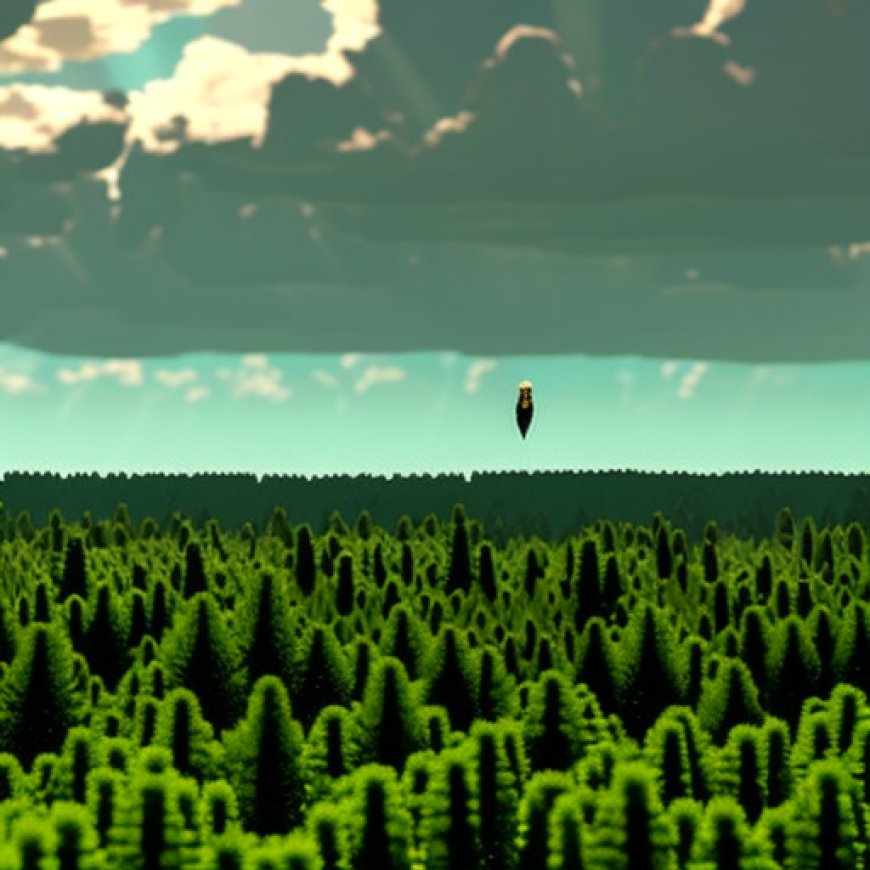In the Wild Coastal Plain of SE NC with the red-cockaded woodpecker and longleaf pine
In the Wild Coastal Plain of SE NC with the red-cockaded ... WHQR


Red-Cockaded Woodpeckers and the Importance of Longleaf Pine Savannas
Introduction
Andy Wood, Director of Coastal Plain Conservation Group, takes us on a journey through Holly Shelter Game Land in southeastern North Carolina to search for the elusive red-cockaded woodpecker. This region is a biodiversity hotspot that is rapidly losing its natural areas due to population growth. In this episode, we explore the interconnectedness between the red-cockaded woodpecker and the longleaf pine savannas, highlighting the importance of preserving these habitats.
The Habitat
Holly Shelter Game Land is a state-owned and managed public trust resource spanning approximately 70,000 to 80,000 acres. It is one of the last remaining large chunks of natural heritage in the region. The longleaf pine savannas found in this habitat are crucial for the survival of the red-cockaded woodpecker.

The Red-Cockaded Woodpecker
The red-cockaded woodpecker, despite its name, does not actually have red feathers. The male has small patches of red on its head, but otherwise, it is not visibly red. The name originates from the colored feathers that military officers wore in their hats during the Revolutionary War. The woodpecker’s survival is closely tied to the longleaf pine savannas, as they rely on the trees for nesting cavities.
The Importance of Longleaf Pine
Longleaf pines are the preferred trees for red-cockaded woodpeckers. These trees have a dense wood that requires slow growth and can withstand fires. The longleaf pine savannas provide an ideal habitat for the woodpeckers, as well as other species such as Bachman’s sparrow and bobwhite quail. Prescribed burns are conducted to maintain the grassy understory and promote the growth of native grasses and wildflowers.
The Role of Red-Cockaded Woodpeckers
Red-cockaded woodpeckers play a vital role in their ecosystem. They introduce red heart disease to new trees, which benefits themselves by softening the wood for easier cavity creation. The abandoned cavities also provide homes for other bird species. Additionally, the presence of red-cockaded woodpeckers indicates a healthy and diverse ecosystem.
The Interconnectedness of Species
The loss of any species, including the red-cockaded woodpecker, has far-reaching consequences for the entire ecosystem. Each species acts as a “rivet” holding together the life support system of our planet. Humans are dependent on the interconnected web of plants and wildlife for our own survival. Therefore, it is crucial to protect and preserve these habitats for the well-being of all species, including our own.
Conclusion
SDGs, Targets, and Indicators
1. No Poverty
- Target 1.4: By 2030, ensure that all men and women, in particular the poor and the vulnerable, have equal rights to economic resources, as well as access to basic services, ownership, and control over land and other forms of property, inheritance, natural resources, appropriate new technology, and financial services including microfinance.
- Indicator 1.4.2: Proportion of total adult population with secure tenure rights to land, with legally recognized documentation and who perceive their rights to land as secure, by sex and by type of tenure.
2. Zero Hunger
- Target 2.4: By 2030, ensure sustainable food production systems and implement resilient agricultural practices that increase productivity and production, that help maintain ecosystems, that strengthen capacity for adaptation to climate change, extreme weather, drought, flooding, and other disasters, and that progressively improve land and soil quality.
- Indicator 2.4.1: Proportion of agricultural area under productive and sustainable agriculture.
6. Clean Water and Sanitation
- Target 6.6: By 2020, protect and restore water-related ecosystems, including mountains, forests, wetlands, rivers, aquifers, and lakes.
- Indicator 6.6.1: Change in the extent of water-related ecosystems over time.
11. Sustainable Cities and Communities
- Target 11.4: Strengthen efforts to protect and safeguard the world’s cultural and natural heritage.
- Indicator 11.4.1: Total expenditure (public and private) per capita spent on the preservation, protection, and conservation of all cultural and natural heritage, by type of heritage (cultural, natural, mixed, and World Heritage Centre designation), level of government (national, regional, and local/municipal), type of expenditure (operating expenditure/investment) and type of private funding (donations in kind, private non-profit sector, sponsorship, and public-private partnerships).
13. Climate Action
- Target 13.2: Integrate climate change measures into national policies, strategies, and planning.
- Indicator 13.2.1: Number of countries that have communicated the strengthening of institutional, systemic, and individual capacity-building to implement adaptation, mitigation, and technology transfer, and development actions.
15. Life on Land
- Target 15.1: By 2020, ensure the conservation, restoration, and sustainable use of terrestrial and inland freshwater ecosystems and their services, in particular forests, wetlands, mountains, and drylands, in line with obligations under international agreements.
- Indicator 15.1.1: Forest area as a proportion of total land area.
17. Partnerships for the Goals
- Target 17.16: Enhance the Global Partnership for Sustainable Development, complemented by multi-stakeholder partnerships that mobilize and share knowledge, expertise, technology, and financial resources, to support the achievement of the Sustainable Development Goals in all countries, in particular developing countries.
- Indicator 17.16.1: Number of countries reporting progress in multi-stakeholder development effectiveness monitoring frameworks that support the achievement of the Sustainable Development Goals.
Behold! This splendid article springs forth from the wellspring of knowledge, shaped by a wondrous proprietary AI technology that delved into a vast ocean of data, illuminating the path towards the Sustainable Development Goals. Remember that all rights are reserved by SDG Investors LLC, empowering us to champion progress together.
Source: whqr.org

Join us, as fellow seekers of change, on a transformative journey at https://sdgtalks.ai/welcome, where you can become a member and actively contribute to shaping a brighter future.







